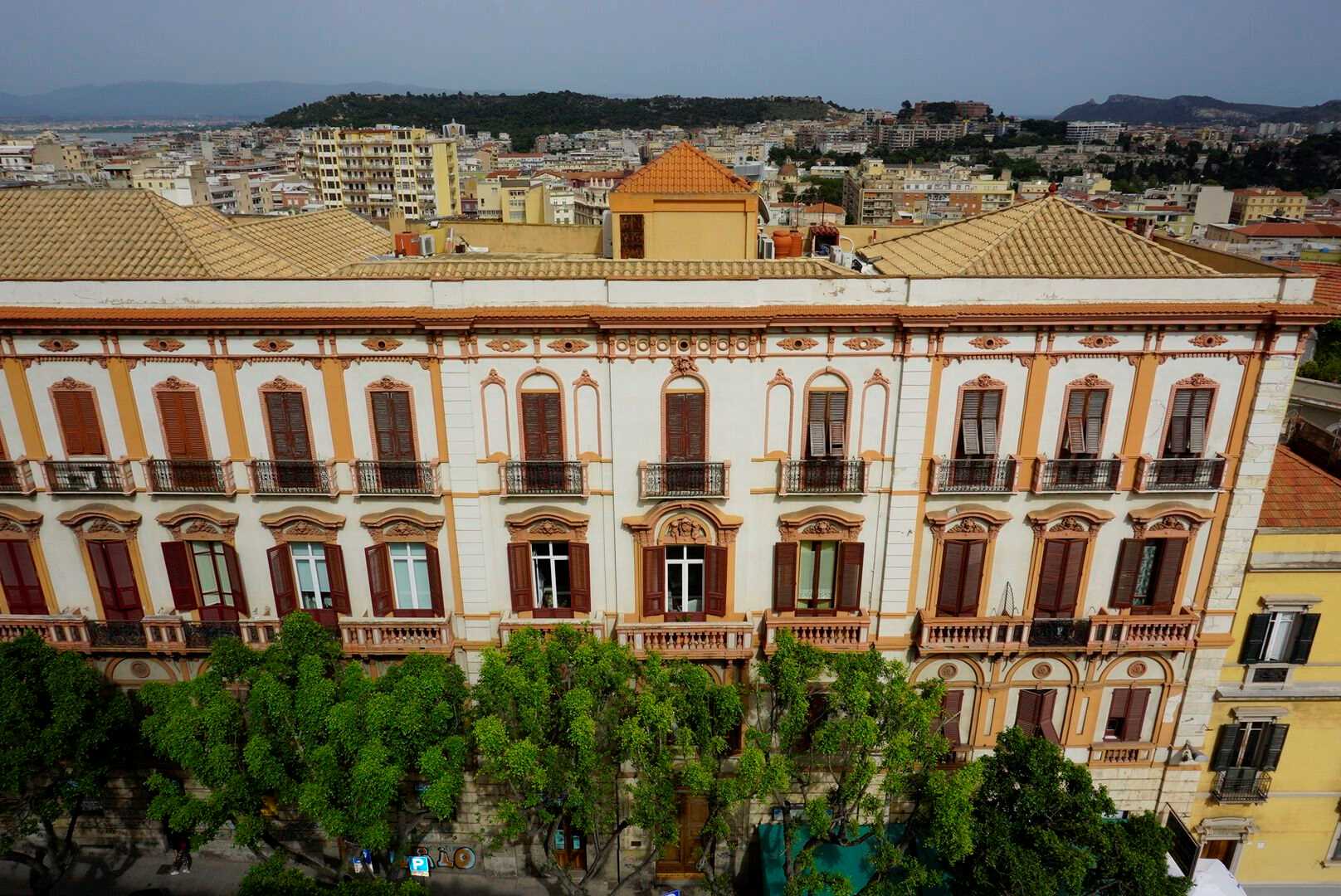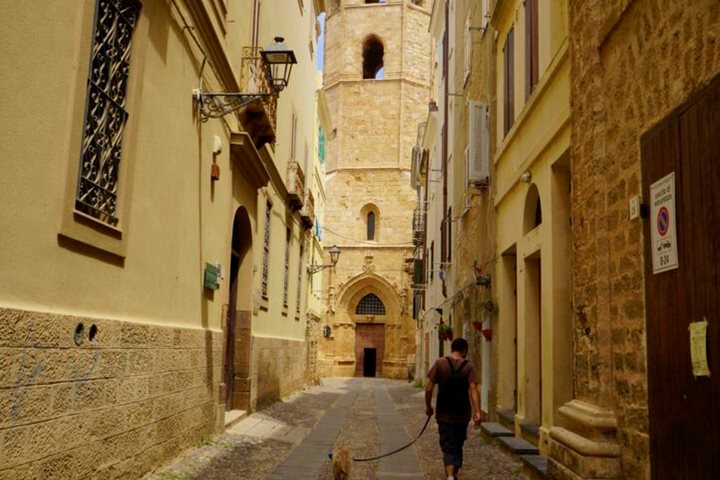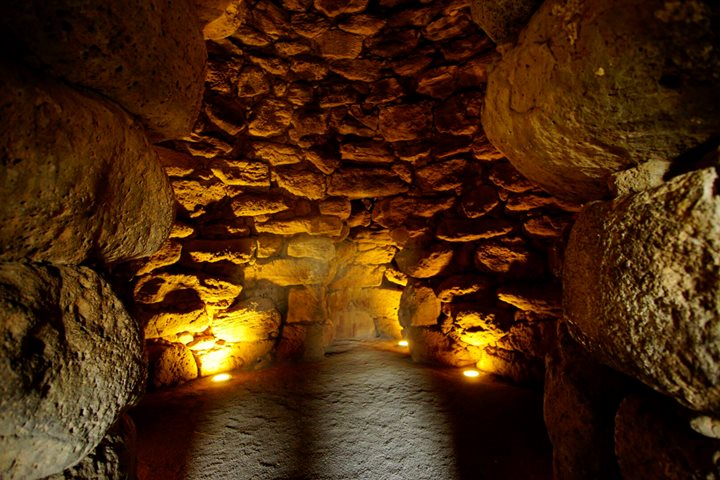The sun rose at about 5:50 and by 6:15 we were alongside the dock in Cagliari. Our first morning in Sardinia was a perfect one – the sun was already showing suggestions that it would be warm, the winds were slight and the journey to Su Nuragi was an easy one. At one point we passed a flock of flamingos feeding in the salt flats that abound here. After a 75-minute ride through the unspoiled Sardinian countryside, we arrived at our destination of the prehistoric site of Su Nuraxi just outside the small village of Barumini. Suddenly emerging from the landscape was a stone habitation complex of small homes which were surrounded by a complex of four corner towers dominated by a centrally positioned massive tower built with cyclopean stones. Since the Nuragi people left no written records, we are forced to provide educated guesses about the settlement. The Nuragi towers were fortifications designed to accommodate the surrounding villagers if attacked. They were built by constructing two parallel walls, one exterior and one interior approximately four feet apart. As the large stones for the walls were laid and the complex grew in height, the area between the stones was layered with smaller stones and clay and hence a ramp like structure developed incrementally. I made a crude measurement of the interior diameter of the large tower across the floor where the well was located, and it is approximately 38’ wide. It is important to note that these people were skilled in metallurgy and made their own bronze tools and weapons. The complex was begun about 1650 BCE and was continuously inhabited until 600BCE. We saw querns for grinding grain, kneading tubs, and the ovens where the bread was baked. There are some 6000 plus Nuragi settlements scattered throughout Sardinia.
After lunch we had a walking tour of the old town and walked by the Roman Amphitheatre built ca. 90CE. Unfortunately, the amphitheater is being repaired and it is closed to visitors. We then visited the brilliant new archaeological museum. The artifacts exhibited cultures from the Neolithic period, the Bronze Age, through the Punic, Greek, and Roman periods. We then walked a short distance to the Cathedral of Saint Cecilia, the patron saint of musicians. She appears to have been a genuine historical figure who was imprisoned and martyred during the empire-wide persecutions of the Roman Emperor Diocletian in 303 CE. The interior of the Cathedral is in the baroque style. Of particular note was the crypt with the hundreds of tiles detailing the images and names of Christian martyrs. In one small chapel, I was surprised to find a tomb of the young son of the Austrian Empress Maria Theresa. I noticed directly behind this elaborate tomb the façade of a Roman sarcophagus for a young boy. While it may seem odd to have an elaborate sculptural motif of a pagan Roman child in a Christian church, such practices were commonplace. The term for the reuse of such earlier artifacts is spolia as in the recycling, sometimes the earlier artifacts were spoiled or destroyed.
We completed this wonderful day with a fabulous barbecue on the Lido Deck. There, mounted in monumental splendor, was a massive yellow fin tuna. And if that wasn’t enough, a roast suckling pig! Dinner was fantastic. The evening was wonderful and all went off to bed having had an outstanding day.







